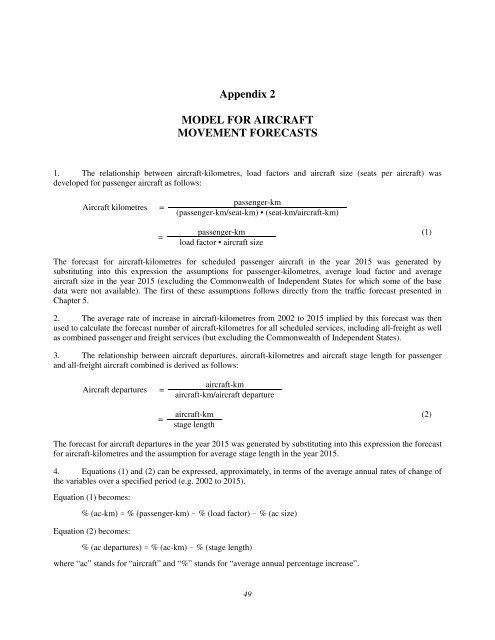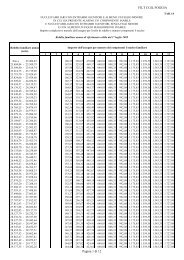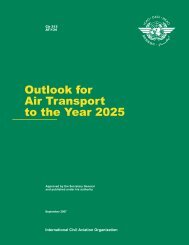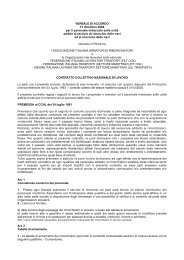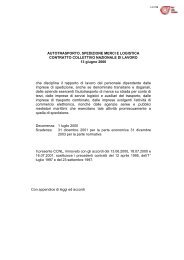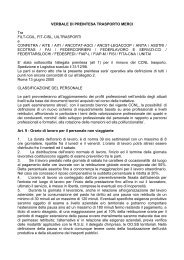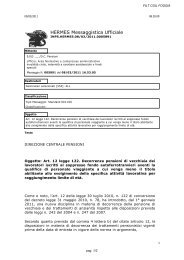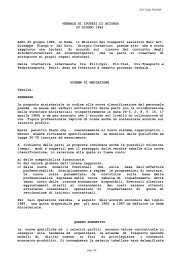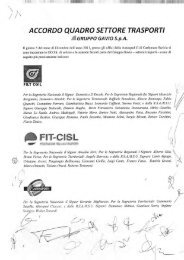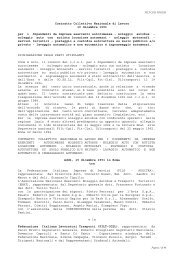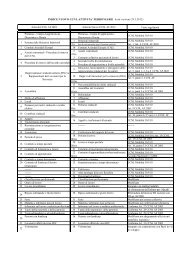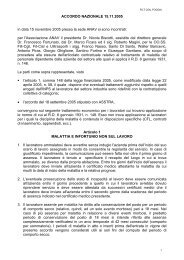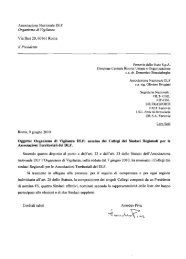Outlook for Air Transport to the Year 2015 - FILT CGIL Foggia
Outlook for Air Transport to the Year 2015 - FILT CGIL Foggia
Outlook for Air Transport to the Year 2015 - FILT CGIL Foggia
You also want an ePaper? Increase the reach of your titles
YUMPU automatically turns print PDFs into web optimized ePapers that Google loves.
Appendix 2MODEL FOR AIRCRAFTMOVEMENT FORECASTS1. The relationship between aircraft-kilometres, load fac<strong>to</strong>rs and aircraft size (seats per aircraft) wasdeveloped <strong>for</strong> passenger aircraft as follows:<strong>Air</strong>craft kilometres ==passenger-km(passenger-km/seat-km) • (seat-km/aircraft-km)passenger-km (1)load fac<strong>to</strong>r • aircraft sizeThe <strong>for</strong>ecast <strong>for</strong> aircraft-kilometres <strong>for</strong> scheduled passenger aircraft in <strong>the</strong> year <strong>2015</strong> was generated bysubstituting in<strong>to</strong> this expression <strong>the</strong> assumptions <strong>for</strong> passenger-kilometres, average load fac<strong>to</strong>r and averageaircraft size in <strong>the</strong> year <strong>2015</strong> (excluding <strong>the</strong> Commonwealth of Independent States <strong>for</strong> which some of <strong>the</strong> basedata were not available). The first of <strong>the</strong>se assumptions follows directly from <strong>the</strong> traffic <strong>for</strong>ecast presented inChapter 5.2. The average rate of increase in aircraft-kilometres from 2002 <strong>to</strong> <strong>2015</strong> implied by this <strong>for</strong>ecast was <strong>the</strong>nused <strong>to</strong> calculate <strong>the</strong> <strong>for</strong>ecast number of aircraft-kilometres <strong>for</strong> all scheduled services, including all-freight as wellas combined passenger and freight services (but excluding <strong>the</strong> Commonwealth of Independent States).3. The relationship between aircraft departures, aircraft-kilometres and aircraft stage length <strong>for</strong> passengerand all-freight aircraft combined is derived as follows:<strong>Air</strong>craft departures ==aircraft-kmaircraft-km/aircraft departureaircraft-km (2)stage lengthThe <strong>for</strong>ecast <strong>for</strong> aircraft departures in <strong>the</strong> year <strong>2015</strong> was generated by substituting in<strong>to</strong> this expression <strong>the</strong> <strong>for</strong>ecast<strong>for</strong> aircraft-kilometres and <strong>the</strong> assumption <strong>for</strong> average stage length in <strong>the</strong> year <strong>2015</strong>.4. Equations (1) and (2) can be expressed, approximately, in terms of <strong>the</strong> average annual rates of change of<strong>the</strong> variables over a specified period (e.g. 2002 <strong>to</strong> <strong>2015</strong>).Equation (1) becomes:% (ac-km) % (passenger-km) % (load fac<strong>to</strong>r) % (ac size)Equation (2) becomes:% (ac departures) % (ac-km) % (stage length)where “ac” stands <strong>for</strong> “aircraft” and “%” stands <strong>for</strong> “average annual percentage increase”.49


